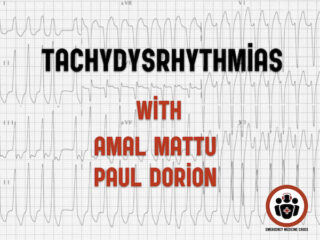ECG Cases 28 Approach to Atrial Fibrillation
Jesse McLaren explains his AFIB mnemonic for approach to atrial fibrillation that involves 4 questions: 1. Is it atrial fibrillation? 2. If it is atrial fibrillation and there is rapid ventricular response, is it fast from a secondary cause? 3. If it is atrial fibrillation with a rapid ventricular response without a secondary cause, what is the intervention? 4. Does the patient need an anticoagulant started in the ED? and runs through 10 cases to elucidate the nuances of atrial fibrillation management on this ECG Cases blog...


